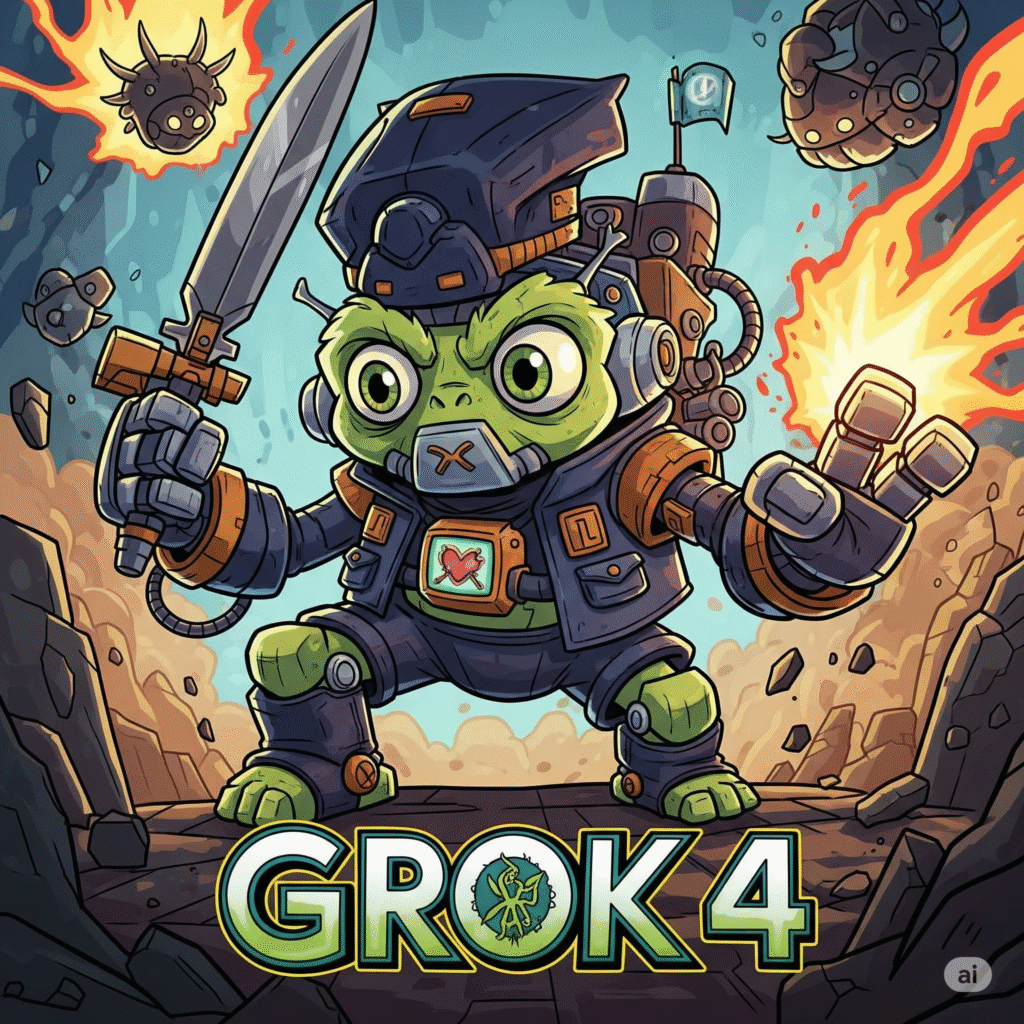
Explore Grok 4’s advanced AI coding features. Compare it with ChatGPT and Gemini to see why developers are excited.
The Rise of Grok 4: A New Era for Developers
xAI, led by Elon Musk, is skipping Grok 3.5 and going straight for Grok 4, a move that signals a major leap forward. Announced via Musk’s X posts, the xAI team is working around the clock to deliver an AI tailored for developers. Here’s what we know about Grok 4’s coding prowess:
- Specialized Coding Model: Grok 4 will feature a dedicated model optimized for programming, designed to generate, debug, and optimize code across languages like Python, JavaScript, and C++. It aims to produce production-ready code with fewer errors.
- AI-Driven Workflow: Expect real-time AI suggestions, such as code optimizations or error fixes, integrated directly into the coding process. This could streamline tasks like refactoring or writing complex algorithms.
- Agentic Coding Potential: Rumors suggest Grok 4 might autonomously write, test, and refine code based on high-level instructions (e.g., “Build a REST API in Node.js”). This could save developers hours on repetitive tasks.
- Unmatched Infrastructure: Backed by xAI’s supercluster of 200,000 GPUs (with plans for 1 million Nvidia H200 GPUs), Grok 4 will handle compute-heavy tasks like real-time code analysis or even generating UI designs alongside code.
Grok 4 vs. ChatGPT: A Battle for Coding Supremacy
OpenAI’s ChatGPT, powered by models like GPT-4o, has been a go-to for developers needing quick code snippets or explanations. Its versatility is impressive, but Grok 4 is aiming to steal the spotlight. Here’s the breakdown:
- ChatGPT Strengths:
- Supports a wide range of programming languages, from Python to Rust.
- Excels at breaking down complex concepts for beginners, with conversational clarity.
- Benefits from OpenAI’s massive user feedback loop, refining its outputs over time.
- ChatGPT Weaknesses:
- Code can be generic or outdated, requiring manual fixes.
- No integrated coding environment, forcing developers to copy-paste into external IDEs.
- Prone to occasional “hallucinations,” generating incorrect or impractical code.
Grok 4 counters with its specialized coding model, which xAI claims will prioritize accuracy and relevance. By integrating AI suggestions directly into the coding process, Grok 4 could eliminate the friction of switching tools. If its agentic coding delivers, developers might write less boilerplate code, letting Grok 4 handle the grunt work while they focus on creative solutions.
Grok 4 vs. Google’s Gemini: Breaking Free from Ecosystems
Google’s Gemini is a favorite for developers working within Google’s ecosystem, offering tight integration with tools like Android Studio and Google Cloud Platform. But Grok 4 is aiming for broader appeal:
- Gemini Strengths:
- Optimizes code for performance, especially for Android apps and cloud projects.
- Provides real-time suggestions in Google’s IDEs, ideal for large-scale development.
- Leverages Google’s robust infrastructure for fast, reliable processing.
- Gemini Weaknesses:
- Tied to Google’s ecosystem, limiting flexibility for developers using other platforms.
- Less conversational than ChatGPT or Grok, which can feel restrictive for creative tasks.
- Focuses more on enterprise use cases than general-purpose coding.
Grok 4’s promise of cross-platform compatibility and AI-driven automation could make it a more versatile choice. With xAI’s massive GPU infrastructure, Grok 4 might process complex tasks (like real-time debugging or cross-language translation) faster than Gemini. If it delivers a seamless, ecosystem-agnostic experience, it could draw developers away from Google’s walled garden.
Why Grok 4 Could Transform Coding
Grok 4 isn’t just about new features—it’s about redefining how developers work. Here’s why it’s generating so much excitement:
- Boosted Productivity: AI-driven suggestions and potential agentic coding could automate repetitive tasks, letting developers focus on innovation. This is a win for freelancers, startups, and enterprises alike.
- Scalable Power: xAI’s $10 billion funding and planned million-GPU data center give Grok 4 unmatched computational muscle, ideal for handling complex projects or multimodal tasks (e.g., generating code and UI designs).
- Beyond Software: Grok 4’s code is already embedded in Tesla’s latest software builds, hinting at applications in automotive and IoT development. This opens new doors for coders exploring emerging tech.
- Transparency and Trust: xAI’s commitment to openness (e.g., sharing system prompts on GitHub) appeals to developers wary of black-box AI, fostering a community-driven approach.
The Bigger Picture: xAI’s Vision for Innovation
Grok 4 is a cornerstone of xAI’s mission to accelerate human discovery. By empowering developers with smarter tools, xAI aims to drive breakthroughs across industries, from software to space exploration. Musk’s vision of rewriting “the corpus of human knowledge” might sound audacious, but Grok 4’s focus on practical coding solutions brings that goal closer to reality. For developers, it’s a chance to build faster, bolder, and smarter.
Will it redefine coding as we know it? Can it outpace ChatGPT and Gemini? The tech world is watching, and I’m here for it.
For the latest on Grok 4, check out xAI’s updates on grok.com or join the buzz on X.
Sources: X posts from @elonmusk, web reports on xAI’s $10 billion funding and GPU infrastructure, and developer discussions on X. Published July 2, 2025.
1 thought on “Grok 4 Review: AI Coding vs ChatGPT & Gemini”